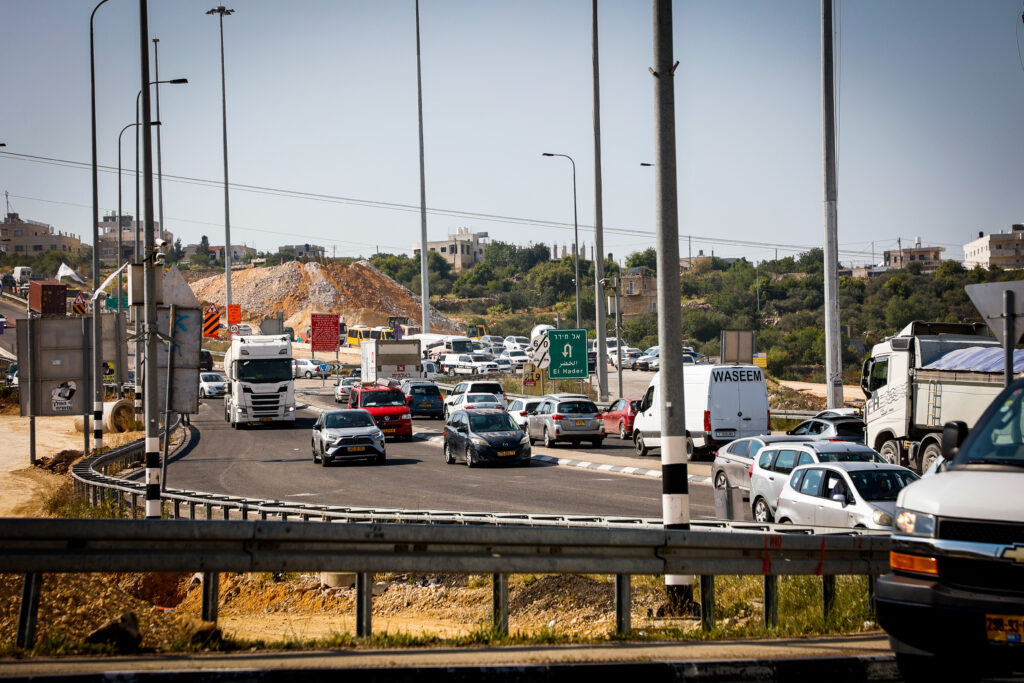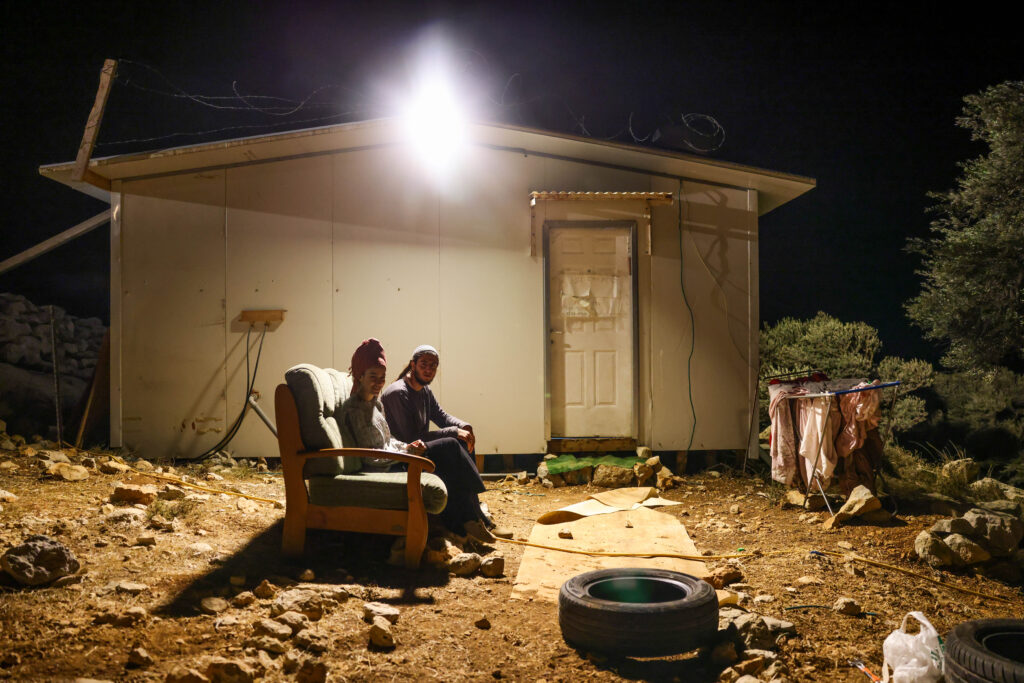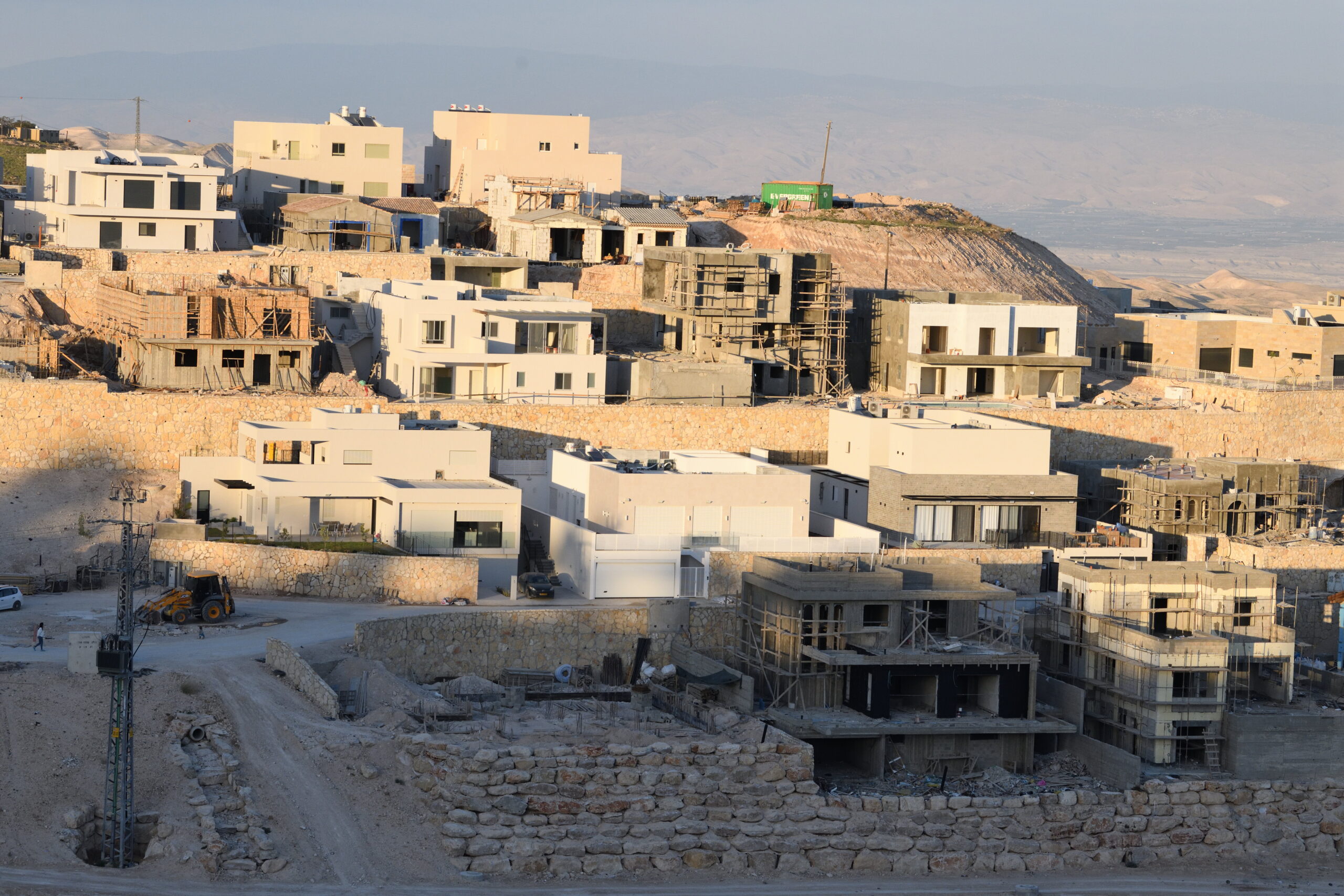“The village is under siege. Out of 22,000 dunams, only 2,000 remain for us. We have nowhere to develop, and we’re already seeing significant outmigration from the village. All because of the Jewish settlement outposts established in recent years around us, whose purpose is to take control of the lands in the area so that the village becomes a large prison surrounded by settlements.” These words were shared glumly this week by Sayel Canaan, head of the Burqa village council in the Binyamin region, in an interview with an Arab television channel, describing firsthand the revolution taking place in the power dynamics between the Jewish side and the Palestinian Authority and its extensive branches.
I have written many times about Fayyad’s plan to establish a Palestinian state. The plan, devised by the then-Palestinian Prime Minister, was built around several key strategies, including a fundamental approach: creating a chokehold around Jewish settlements to disconnect them from each other, prevent them from expanding, and effectively turn them into enclaves in hostile Arab territory.
In the absence of any counter-response from the Jewish side, which was essentially asleep on its feet and wasn’t even aware of the existence of the plan for almost a decade, it progressed rapidly on the ground and began to isolate and strangle the settlements of Judea and Samaria one after another. Massive road construction, organized events with foreign activists to establish orchards right up against the fences surrounding Jewish settlements, extensive construction spread across the mountains, and Arab plowing “to the last furrow” – all these factors created a tragic situation within just a few years where almost every Jewish settlement in Judea and Samaria found itself increasingly surrounded by Arab encroachment. The security concept that prevailed in most settlements, which believed in strong protection of the fence line and nothing more, did not help the situation either, and in areas like the center of Gush Etzion, you could watch such deliberate takeover operations happening in broad daylight, ten meters from the settlement fence, occurring without any response.

Even after the dimensions of the danger began to be exposed, the settlements of Judea and Samaria were divided into two. The vast majority continued to sleep, while a few saw the hair-raising reports published as an urgent call to action and launched a rearguard action against Arab encroachment – either by supporting settlement points outside the fence or by establishing a land committee to fight Arab construction. However, even in areas where there was an awakening of the Jewish public, the balance of power remained heavily tilted against the Jewish settlements. The residents’ struggle managed to delay and somewhat thwart Arab construction plans, but it was no more than a finger in the dam. In Jewish settlements, they convened emergency meetings and anxiously discussed the correct response to the worsening situation, while the Palestinian Authority, in contrast, treated the counter-response as no more than a minor setback.
The past two years have seen a dramatic shift in the strategic landscape. This transformation stems from a sustained campaign centered on establishing Jewish outposts beyond settlement fences, creating a critical mass that has fundamentally altered the regional dynamics. The change has been revolutionary. Palestinian forces that once faced little resistance now find themselves on the defensive, holding their own emergency meetings—eerily similar to those the Jewish settlers held years before—as they struggle to prevent their villages from becoming isolated enclaves surrounded by Jewish territory. What was once Palestinian optimism about establishing a de facto state has given way to despondency among Arabs in Judea and Samaria, with many speaking fearfully of a “third Nakba.”
Before delving into specific examples, I should emphasize that conditions across Judea and Samaria differ significantly by region. In some areas, security concerns remain acute and Jewish settlement presence is minimal. However, in a growing number of regions, the landscape is transforming dramatically. This transformation deeply dismays those hostile to Jewish presence, as they watch their long-standing efforts to control these territories crumble before their eyes. I decided to focus in this column on two central villages in the Binyamin region that have gone from being centers of aggressive territorial expansion to enclaves in Jewish territory.
The first is the village of Burqa. Burqa is a small village near Highway 60, yet until recently, it controlled an area vastly exceeding its built-up footprint. Its sphere of influence stretched from the Kokhav Ya’akov gas station in the south to Givat Assaf in the north, from Route 60 in the east (including the Ramat Migron ridge where I now live) all the way to the outskirts of Psagot settlement in the west. The village is home to dozens of Arab shepherds who used to graze their flocks right up to the settlement fences, occupying an area of almost 20,000 dunams. In the village itself, they were not content with grazing and continually worked to establish their hold on the land, through agricultural cultivation, preparing plots surrounded by stone walls, or by building “agricultural structures” within the orchards that were populated after a short time.
On my cell phone, in a place of honor, is stored a collection of videos from the pre-Ramat Migron days, which this week celebrates 4 years since our core group went up to the area, showing, among other things, Burqa shepherds calmly preparing coffee on the road leading to the Migron settlement, 150 meters from the settlement fence.
The establishment of the settlement outpost pushed the hold of the Arabs of Burqa from the ridge that stretches from the “Bath” area to the Kokhav Ya’akov gas station within a few months, and since then, they continue to increase the area under Jewish control on settlement outpost by hundreds of additional dunams each year. At the same time, in the hills of Oz Zion and Tzur Harel west of the village, they created a wide protective strip between Burqa and the settlements of Givat Assaf and Psagot, and thwarted the PA’s attempts to create Arab territorial continuity between the village and the city of Al-Bireh, which already touches the “Garbage Route” connecting Beit El and Psagot.

Despite their habit of lying shamelessly at every opportunity, the situation described by village head Canaan in that interview is remarkably close to reality. Jewish shepherds from the nearby hills now graze just a few hundred meters from the village houses, while the Arabs are forced to quarrel among themselves over the little space left or sell their flocks, as Canaan lamented later in the interview. “Many of the breeders sold their flocks due to lack of grazing or fear of ‘settler attacks’ every time they left the village area.” According to him, the Arabs’ agricultural takeover of the area also suffered a fatal blow. “Out of 10,000 dunams previously controlled through agriculture, Burqa farmers now cultivate only 1,000 dunams,” claimed Canaan, who also complained that the PA is not helping them enough in their struggle against the settlers.
North of the village of Burqa is the town of Deir Dibwan. If in the case of Burqa it was a relatively small village, albeit one that controlled extensive areas, then in Deir Dibwan the starting data was completely different. It’s a large and well-connected town, many of whose sons are U.S. citizens, and among its residents can be found a series of dignitaries such as Ramallah governor Laila Ghanem. If you wondered for a moment, the fact that they are modern Arabs with foreign citizenship did not reduce their nationalism and hostility in the slightest. On the contrary, their various connections were only recruited to benefit the struggle for land, and while one hand held a stick and a plow – with the other they made sure to harness various institutions, unfortunately also Israeli ones, for the benefit of the extensive takeover they conducted around the village. The areas into which the town invaded over the years are enormous and almost incomprehensible. From Ofra in the north to the settlements of Michmash and Migron. On each side of the village, until recently, one could see long arms of takeover in the form of Arab invasion outposts, usually composed of tents and light construction, alongside more massive industrial buildings and residential houses that almost reached the interchanges of Highway 60 and the Alon Road.
Sadeh Yonatan was the first of the settlement outposts established around Deir Dibwan. Settlers established it only two years ago to block, at the last moment, the Arab chokehold on the Alon Road from the direction of the village. Before the outpost’s establishment, two Arab invasion outposts occupied the location. These were removed after a prolonged battle over grazing areas. The warfare that erupted against the settlement outpost (and earned a long column in this section) even veteran activists did not expect. The town, which gave the impression of a quiet and modern place, was revealed as a nationalist stronghold that received praise from end to end from PA seniors for their violent war waged for close to a year against the hill. A “resistance tent” was established on the outskirts of the village, and served as a base of operations for more than 100 Arab rioters who stayed on rotation at the site every night and carried out mass attacks and terrorist actions against the hill. No less than dozens of incidents of throwing Molotov cocktails, 14 explosive charges, 20 shooting incidents towards the hill, and a long series of shepherd attacks were carried out by the village in less than a year, but these gradually faded in the face of the determination of the hill’s residents. In the test of results, shepherds from the settlement outpost now graze their flocks just ten meters from the village’s line of houses, and the “resistance tent” stands deserted and scattering in the wind, a memory of the mighty battle that took place there. The Arab expansion effort sent from the village towards the Michmash settlement was cut off, and is only getting shorter from month to month with the abandonment of more and more Arab takeover buildings.

The establishment of “Hanina’s Farm” about a year ago east of Sadeh Yonatan dealt another fatal blow to the takeover on the southern and eastern side of the village, and the Arab invasion outposts that still remained in the area and stretched to the interchanges of the Alon Road packed their belongings and relocated to the center of the village.
Shortly after Sadeh Yonatan, Givat Or Meir was established on the other side of the village, near Ofra and the Trifi quarries. There had been a previous settlement attempt on the hill a year and a half earlier. That attempt ended when dozens of Arabs attacked the site just days after its establishment. After two residents were injured in the attack, the settlers abandoned the location. About two years ago, a new core group went up to the place, with the goal of holding onto the mountain no matter what. Through a combination of a sheep flock and cultivation of the areas in the area, the hill gradually established its hold on the land, and after a few weeks, the Arab invasion outpost that led the attack on the previous core group left and retreated back to the outskirts of the village along with its belongings. Today, the settlement outpost controls an area of thousands of dunams, and as in Sadeh Yonatan, the settlement’s sheep flock grazes to within tens of meters of the village houses and blocks their expansion to the area.
Givat Or Ahuviya was established on the land continuing along the ridge that separates Ofra from Deir Dibwan about a year ago. It’s currently populated by 2 families and a group of young women. In recent months, another settlement outpost has joined it at the end of the ridge, completing the Jewish defense strip north of Deir Dibwan. Since its establishment, the hill has already caused the abandonment of 2 Arab invasion outposts back into the village, and it is within touching distance of disconnecting Deir Dibwan from the cluster of villages of Ramon, Taybeh, and Deir Jarir, which make the village part of a formidable Arab territorial continuum stretching from Shiloh to the approach of Yaakov. When, God willing, the residents of the hill complete their mission, the town of Deir Dibwan will finally become an enclave in Jewish territory, and for the first time, a Jewish continuum will be created between the two longitudinal axes in Binyamin – Highway 60 and the Alon Road.
This week, incredibly, Deir Dibwan residents have sunk to such depths of despair that they’ve turned to Trump as their last hope for salvation. Village residents with U.S. citizenship were asked to sign a petition addressed to the President and Ambassador Huckabee, pleading for protection from alleged security violations and land theft by “evil-hearted settlers.” Their petition claims: “Most American citizens in Deir Dibwan are women and children, living in peace, raising families and studying at school. However, they face constant fear from ongoing settler attacks.” This characterization blatantly ignores the series of terrorist attacks launched from the village and completely reverses the roles of attacker and victim. Trump, much to the village Arabs’ dismay, has yet to respond to their manipulative appeal.
As I noted at the beginning of this column, many areas in Judea and Samaria remain far from the positive developments seen in the two regions I’ve described. Nevertheless, the trend is unmistakable and irreversible. No longer are we simply beating our heads against a wall year after year. Whenever the people of Israel awaken and commit to establishing a presence in an area, it’s merely a matter of time before enemy forces retreat. The amount of land returning to Jewish hands increases dramatically with each passing year, and before our eyes, redemption is unfolding. Our only remaining task is to accelerate this momentum—each supporting the campaign in their own way—and with God’s help, we will soon witness the complete redemption of our entire land.




